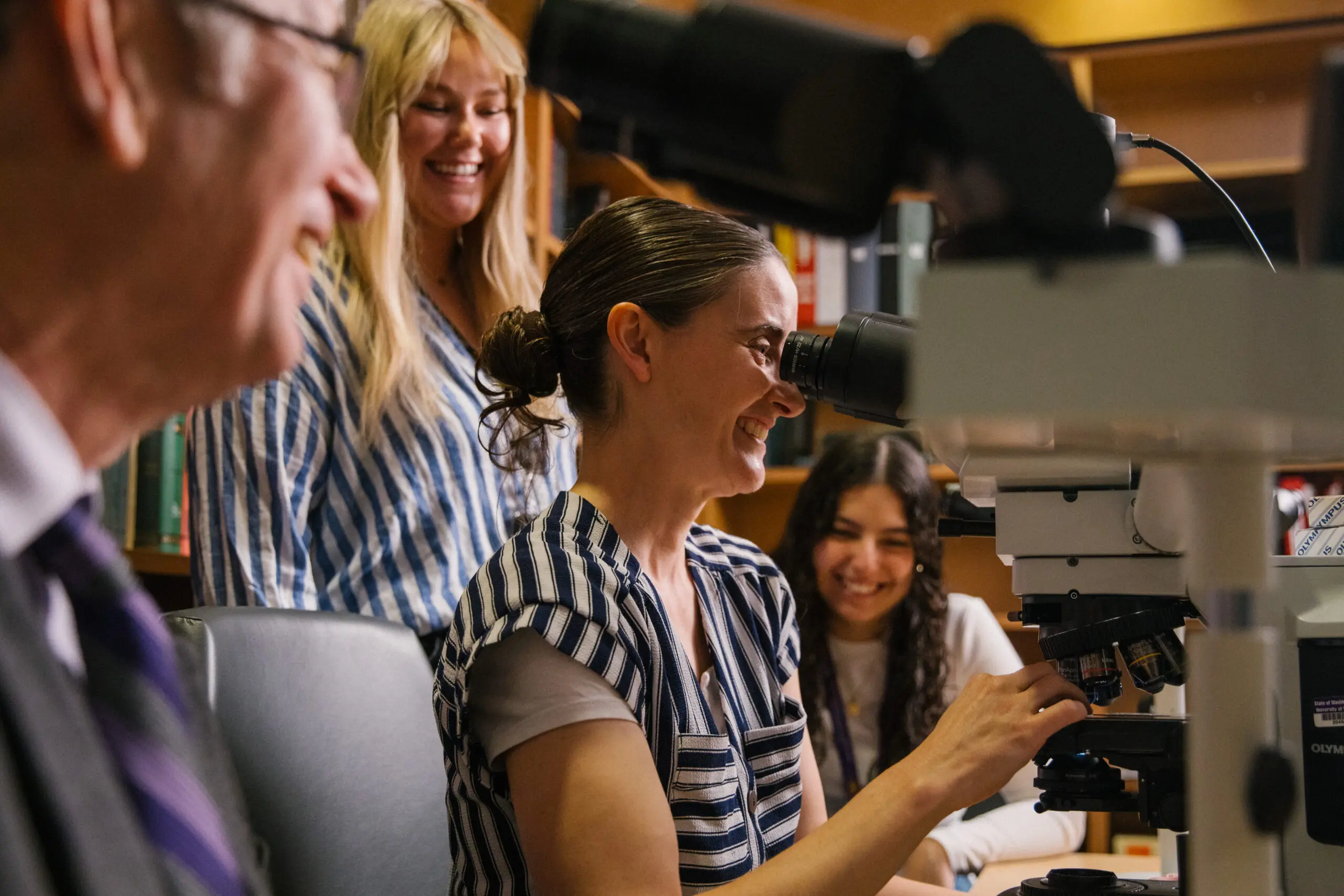What is a brain in a dish? A thriving bunch of brain cells, grown to order. And what prompts someone to grow a brain in a dish? The desire to investigate — without actually reaching into someone’s cranium.
With the support of the Ellison Foundation and the Friends of Alzheimer’s Research, Suman Jayadev, M.D., UW associate professor in the Department of Neurology, is growing immune cells found in the brain — known as microglia — in a petri dish. She’s hoping this cutting-edge research model holds the key to unraveling the mysteries of neurodegenerative diseases, and she recently had a major breakthrough in her efforts to understand how a malfunctioning immune system can lead to Alzheimer’s disease. She answers our questions, below.
Tell us more about your breakthrough and how it enables you to grow a brain in a dish.
We took skin cells from people who have Alzheimer’s disease — or who have a gene mutation that can cause Alzheimer’s disease — and turned them into induced pluripotent stem cells (iPSCs). These stem cells have the ability to become any kind of cell in the human body. We established a relatively simple, reliable way to turn those stem cells into microglia, which is a fairly new technique.
While we aren’t at the point where we can grow a 3D structure of the brain, what we can do is layer different types of brain cells in a petri dish so that they form a rudimentary structure — then we can observe how they interact. That’s our next step.
Why is this such a big step forward for Alzheimer’s disease research?
Over the last few years, we’ve discovered that microglia can be the primary drivers of disease. But we’ve been restricted to working with the brain immune cells of mice. There are a lot of important differences between mouse brains and human brains and the way our immune systems function. Now we can work directly with human cells. We can model how malfunctioning immune cells in the brain harm neurons, causing or worsening diseases like Alzheimer’s.
What’s even more exciting is that we can screen for drugs that could potentially make the neurons or immune cells function the way they should — preventing or curing Alzheimer’s.
Where do you see this research going in five years?
I imagine we’ll be able to take cell samples from people who have Alzheimer’s or a family history of the disease and start to screen for what system is not working properly. For example, maybe it’s their immune system, or maybe it’s the way their cells are processing misfolded proteins. We can test that in a petri dish, and we’ll have a better sense of what kind of drugs would work for them. It’s a form of precision medicine.
How did you get to this point?
Our work with the microglia was only possible because of a pilot award we received from the Friends of Alzheimer’s Research. Publishing a paper about our new technique gave us some traction — it helped put us on the map as an innovative group. Now that we’ve established the tools for producing microglia, we can keep moving forward.

